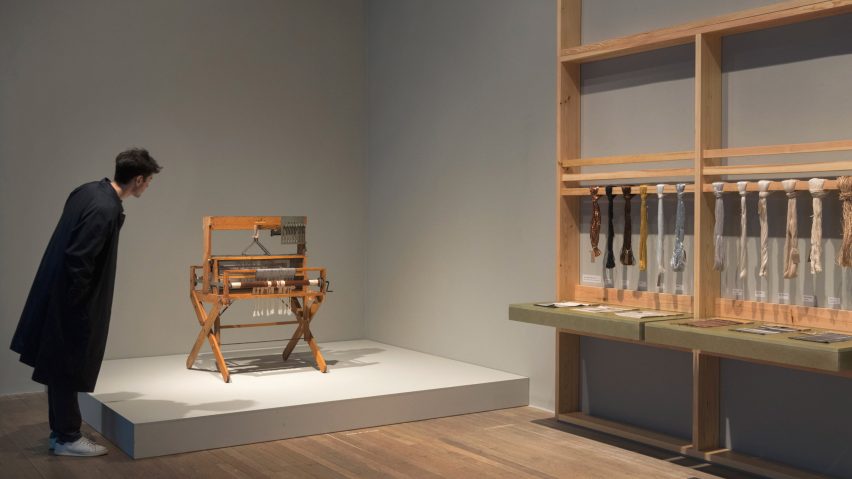
Tate Modern curator selects five of Anni Albers' radical weaving designs
Tate Modern's retrospective of weaver and Bauhaus teacher Anni Albers celebrates the broad range of her work. Curator Briony Fer picks five exhibits that best demonstrate her radical methods.
It is widely acknowledged that Albers transformed the way that the craft of weaving was viewed, by looking forward in her unusual techniques and modern teaching methods, and back to its ancient roots on her trips to Latin America.
The exhibition demonstrates the wide range of materials she used, such as cellophane in a sound-proofing wall-covering, and her embrace of both industrial manufacture and weaving on the hand-loom.
Curated by Fer and Ann Coxon, Anni Albers runs until 27 January 2019 at Tate Modern. The show coincides with 100 years since the foundation of the Bauhaus school, where she studied and taught. To mark the centenary of the school's founding, we've created a series of articles exploring the school's key figures and projects.
Here, Fer explains five of the most innovative works from the exhibition:
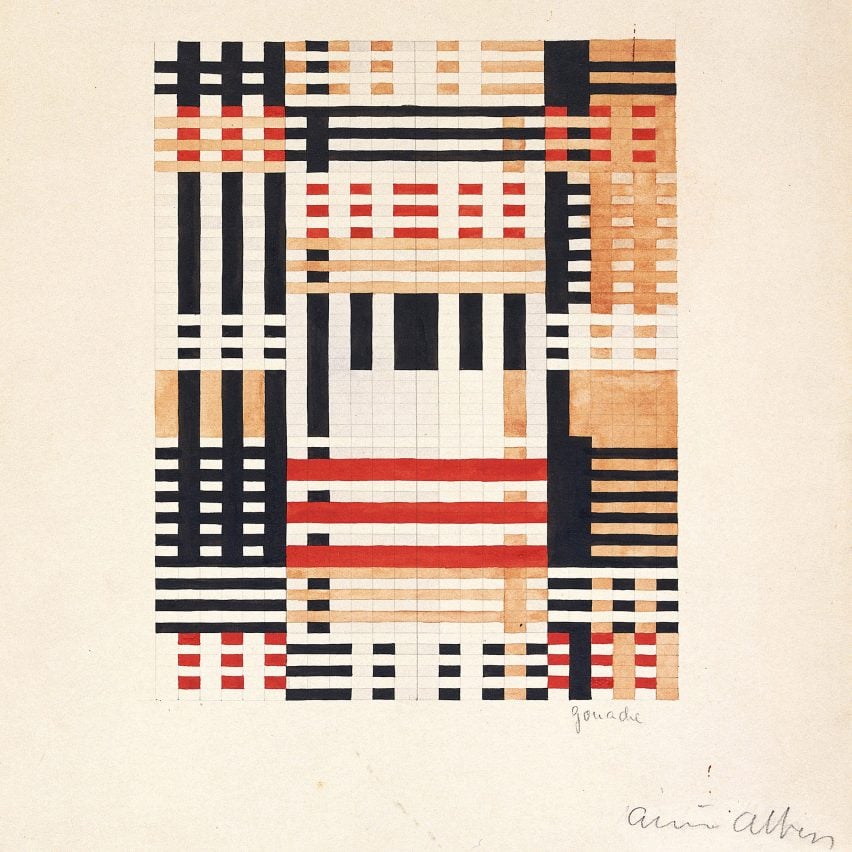
Design for a Wall Hanging, 1926
Albers became a student at the Bauhaus in 1922 and produced many designs that show her exploring multiple permutations of the grid. Design for a Wall Hanging is one of her gouaches for a jacquard wall-hanging, but she would make similar drawings for tablecloths.
Throughout her life she worked making one-off pieces and functional textiles for use, working on a hand-loom but also designing for manufacture.
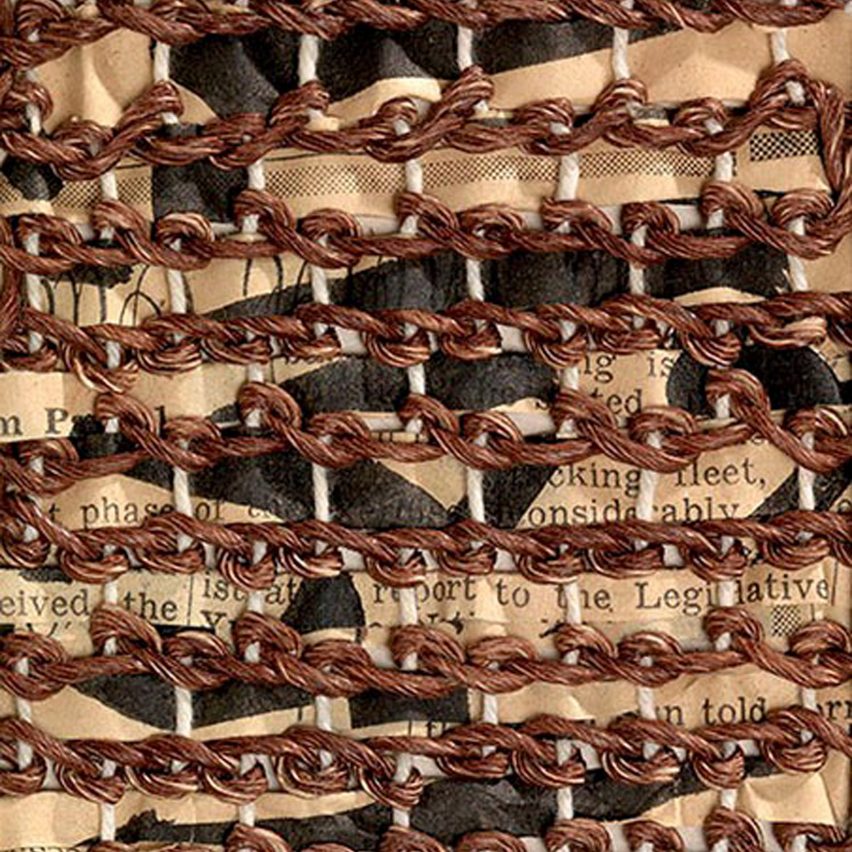
Study of Effect of Construction Weave, non-dated
When Anni and Josef Albers emigrated to the United States in order to escape the rise of fascism in Europe, they went to teach at Black Mountain College in the mountains of North Carolina.
Setting up the weaving workshop for this radically experimental school, Anni Albers set her students exercises – using found materials like newspaper or grass to explore "the stuff the world is made of", as she put it. Study of Effect of Construction Weave is an example of this teaching made by Albers.
Looking back, she said she wanted to enable her students to regain "sensitivity towards textile surfaces" that had been lost in much of modern life.
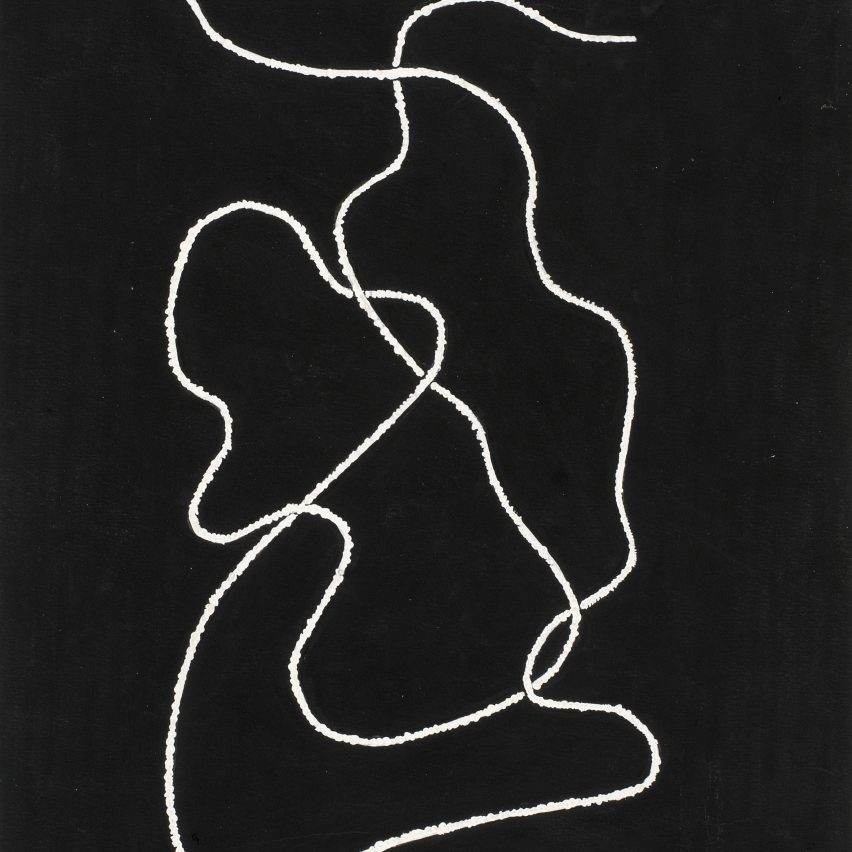
Drawing for a Knot, 1948
Albers made this drawing in 1948 in gouache on black paper, and the white line almost stands up as a thickness. Everything she did points to the tactile and the manipulation of objects.
Here she starts to think about the knot as a fundamental, minimal unit which can be endlessly looped and twisted and entangled. The drawing recalls the ideas of the 19th century architectural theorist Gottfried Semper, who thought that the textile was the first wall, and the knot the most basic element of the textile arts.
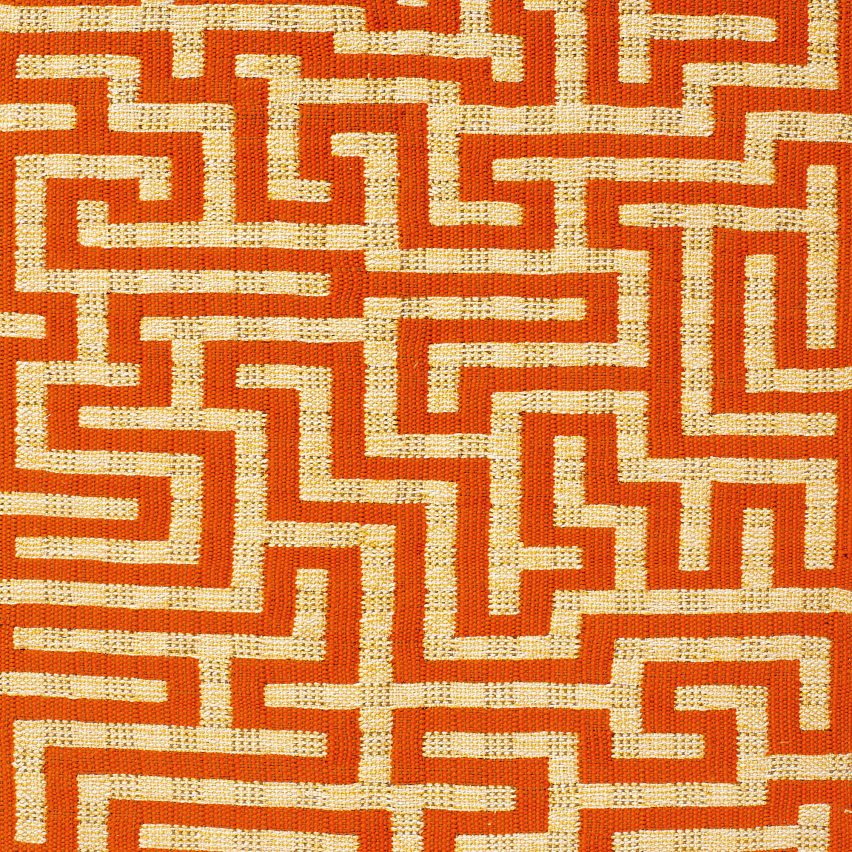
Red Meander, 1954
Once they went to America, the Albers began to travel in both Mexico and Latin America. Anni wove this piece on her return from her trip to Chile and Peru in the early-1950s. She always saw the great Andean weavers of Peru as her "great masters" and throughout her life studied their techniques.
She drew on the symbolic and schematic patterns she found in her own woven constructions. Here a red maze pattern intersects with the more subtle black points of the underlying grid.
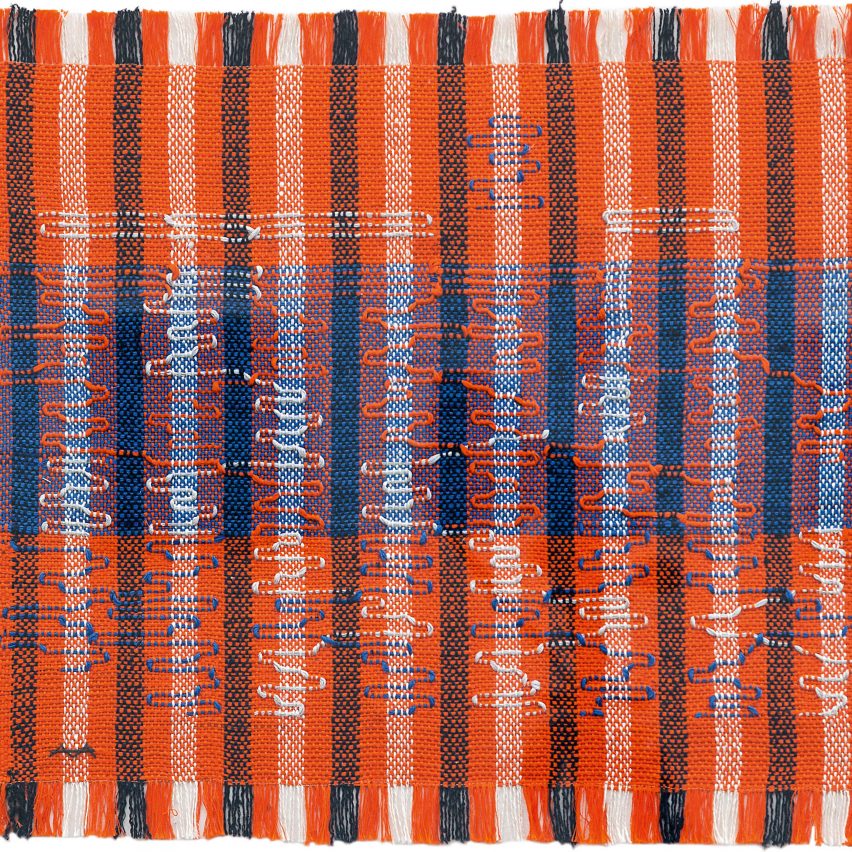
Intersecting, 1962
Albers sometimes used what is called a "floating weft", meaning the coloured thread that meanders across the surface of the weaving like so many different coloured graphic lines. It suggests not only Paul Klee's famous advice to "take a line for a walk" but also anticipates certain forms of coding.
Weaving is such an ancient craft and yet it seems to have a currency in our digital world. Other works from this period are called "Haiku" and "Code" which show how interested she was in encoded forms.